Judging from hushed snippets of conversation I picked up from concertgoers around me before the Romeros took the stage at Knowles Memorial Chapel on Sunday afternoon, I was not the only one wondering why we were all there — not “there”, to see this incredible, multi-generation family of virtuoso class ical guitarists, but “there” at the chapel.
The “Royal Family of the Guitar” is celebrating its 55th anniversary—founded in 1958 by patriarch Celedonio Romero—and continues to exhibit a degree of musicianship and musical finesse worthy of the epithet. The only problem at this Bach Festival engagement was that, at least from row N where I sat (only about halfway to the back from the first row), it was a strain to hear.
In general, and throughout the two-hour recital, the selections for solo guitar or guitar duo sounded much better, especially in mid-tempo and slower movements or sections. As a quartet (the current group consists of second-generation Pepe and Celin and third-generation Celino and Lito), and especially in up-tempo movements, fortes and upbeat strumming were dissipated and scattered back toward the apse and high ceilings of the 1932 chapel.
Why the recital didn’t take place instead at the more acoustically refined Tiedtke Concert Hall—also on campus at Rollins and designed for chamber and solo music—I don’t know. Whatever the reason, by and large the dispersed acoustics at Knowles Chapel hurt the group’s accomplishments in dynamics and ensemble interplay.
I wondered what it sounded like in the apse behind the performers, where nobody sat (understandably so), or on the second floor on the sides of the nave, where people could be spotted. The unamplified music of the Romeros seemed to be pulled up in that direction.
Let us take a look at what did happen rather than what should have: By far the best performance was Celin’s (the eldest son of Celedonio) take on Preludios No. 1 and 3 by Villa-Lobos.
He applied an immaculate rubato touch, effectively emphasizing notes and phrases with touching tempo undulations. Celin articulated notes and subtly stressed dynamics in a songlike tone; the sadness of the main theme of the third prelude was particularly poignant.
Pepe’s arrangement of Asturias, a classical guitar staple, sounded much better in the slow middle section, where his gentle muting of the strings in certain phrases was a high point, as in his elegiac rubato toward the end.
The acoustics did not permit the strumming parts to resonate as they should, a problem that the Fantasia Sevillana also had. The middle, slower section of the latter was much more incisive, fitting the general pattern I mentioned above.
Pepe and Celino performed as a duo for Joaquin Rodrigo’s three-movement Tonadilla; the interplay of the ‘Minueto pomposo,’ especially during the fast runs up the fretboard, was more clearly discernible and accordingly impressive.
In Boccherini’s Introduction and Fandango, arranged for quartet, the meditative slow introduction was followed by a muddle from all four guitarists as the tempo swelled—again the chapel’s deficiency in acoustics shone. This was the most unfortunate thing about the recital, obvious even in the opening number, La Revoltosa: When the quartet played together, not only did the forte high points project weakly toward the open expanses of the chapel, but the sound in general was also muffled, which made it difficult to discern discrete musical voices and obscured any phrasing going on up close.
Celino and Lito’s duo was redeeming: they delivered an enchanting performance of Granados’ Danza No. 2, ‘Oriental,’ with Lito anchoring the piece with a softly articulated ostinato that comes back and again, while Celino took the main melody.
Two Romero originals were included.
One was the late Celedonio’s ‘Fantasia Cubana,’ from his Suite Andaluza. A solo showpiece for Celino, the performance included tingly harmonics, a well-articulated strumming swell, and a riveting short section toward the end in which Celino tapped the string with his right hand directly on the fingerboard.
Two movements from Pepe Romero’s Suite Flamenca for quartet closed the program, with introductions by the composer.
Inspired by the Moors of Granada and the region’s allure, ‘En el Sacromonte’ includes soft percussive blows on the guitar’s bridge and rhythmic fingernail drumming on the sides. I particularly liked this movement for being less melody-driven and more moody, evocative of a welcome, surreal feeling. ‘Colombianas,’ on the other hand, is much more melodic and festive—a synthesis of Colombian folk music and flamenco rhythm. Like the encores, the piece is more about strumming and merrymaking, relying a bit too much on flamenco strumming to achieve the desired effect.
The 2016/2017 season of the Bach Festival Society will be announced on March 31, the 331st anniversary of the birth of J. S. Bach, after whom this great organization, a pillar for arts and culture in Central Florida, is named.

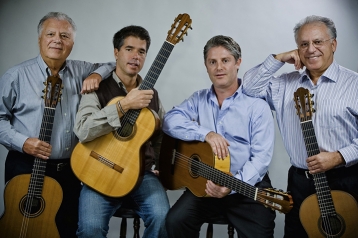
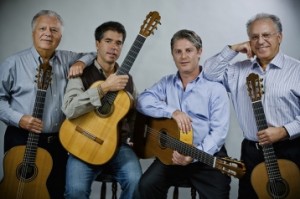
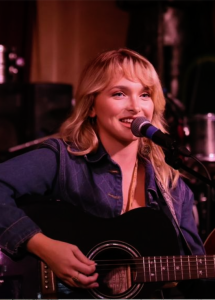

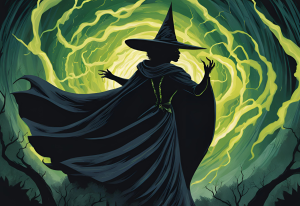

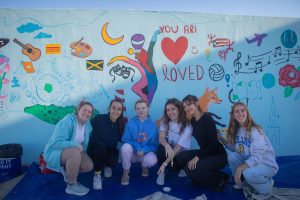
Be First to Comment